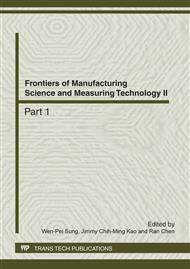p.1154
p.1158
p.1164
p.1169
p.1173
p.1177
p.1182
p.1186
p.1190
Burst Strength Prediction of OCTG
Abstract:
With high pressure high temperature (HPHT) oil & gas wells increasing, oil country tubular goods (OCTG) service environment tends to be critical complex. In these critical oil & gas wells, when burst failures of high strength service grades for downhole applications once take place, the H2S gas may be run freely between tubing and intermediate casing, intermediate casing and surface casing, even the sulfur-containing gases spring ground, the harm is self-evident. Therefore, an accurate prediction of the burst strength, which is defined as the maximum value of internal pressure required to cause the steel casing to fail, is a very important consideration in the casing design process. The burst model has been provided in ISO/TR10400:2007, but almost half of the predictionts exceed the test burst strength. So this paper develops a new model that incorporates the influence of yield-to-tensile strength ratio on burst failure of casing and tubing without defects.
Info:
Periodical:
Pages:
1173-1176
Citation:
Online since:
April 2012
Authors:
Price:
Сopyright:
© 2012 Trans Tech Publications Ltd. All Rights Reserved
Share:
Citation:


